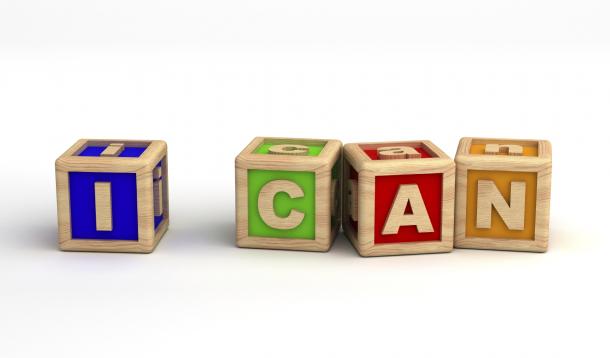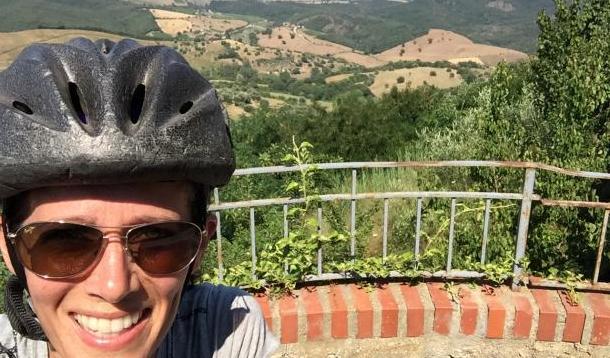
I distinctly remember my first interaction with a toddler well before I became a parent. Her mother needed to run out to do some errands so I agreed to stay with the 13-month old girl for a couple of hours. As the door closed behind her mom, the girl and I were left staring at each other, both not sure what to do.
She made a motion to stand so I lifted her from her sitting position to a standing one and held out my arms beside her as she wobbled from one piece of furniture to the next. Each time she stumbled, I’d catch her and get her set on her feet again. After doing this for about an hour, I had a screaming backache and she was happy as a lark, having someone catch her before she hit the ground.
A short time after my son was born, I was recounting my happy, yet backbreaking time with this other child when a wise mother said, “How are children going to learn to walk if you keep catching them when they fall?” She was right! The only think that little girl learned was how to throw her arms up and look at me when she wanted to get up: not how to actually get herself on her feet. My good intentions were actually hampering her walking ability.
This moment has really stuck with me as my children have grown older. The idea that helping too much can actually hold our children back was solidified when I read Jessica Lahey’s book The Gift Of Failure. In it, Lahey states that, “Every time we rescue, hover, or otherwise save our children from a challenge, we send a very clear message: that we believe they are incompetent, incapable, and unworthy of our trust.” She goes on to say, “Further, we teach them to be dependent on us and thereby deny them the very education in competence we are put here on this earth to hand down.”
The trick is to let go of our children just enough to experience mistakes, challenges or suffering in order to grow wise but not so much to permanently break them.
I had the opportunity to meet Jessica Lahey at a recent conference. From left to right: Jessica Michaelson, PhD, me, Katherine Stone (from Postpartum Progress) and Jessica Lahey.
I have found that establishing this balance is easier when we focus on these five points:
Learn about “core beliefs” and how they affect a child’s perception of themselves, the world, and other people. When we know that jumping in too quickly can hamper with their being capable beliefs, we can feel better about taking a step back. We know that taking this step is being done with support and trust.
Trying to remove all of our children’s obstacles hurts their ability to learn from their mistakes and it is also a HUGE ENERGY DRAIN. The output required to micromanage our children is better spent trying to fulfill their important missing needs: by filling their buckets so full that they can handle when others put holes in their tank.
Mistakes, conflict, challenges, and disappointment happen. Preventing these experiences does not give our children the opportunity to practice what to do in these situations. Even with toddlers, we can start coaching them through disappointment by not giving into demands. For example, when your three year-old throws himself on the ground because you stirred the yogourt wrong (I feel for you), rather than getting a new yogourt, which will teach him that freaking out is a successful strategy, your calm words will help him realize that disappointment happens. Saying something like, “You are mad because the yogourt isn’t in the bowl the way you like it. That can’t be changed. (Soft language and touches on the back) I’m sorry this is hard.” Stay calm and supportive until he calms down.
Providing our children with the care he or she needs, whether that comes from a trained professional or ourselves, shows our children that when things head south, we have options to try and people to lean on. I do post free parenting information on my Facebook page if you'd like to read more.
Helping your children reach a point of futility (that no matter what they do, the difficult thing can’t be undone) helps them engage their problem-solving center. Each time hard moments happen, after acknowledging the feelings association with the experience, we can grow positive brain connections by showing our children how to consider options for a solution. As Peg + Cat sing, “There’s more than one way to solve a problem.”
I know this can feel really hard, but it’s important to separate our personal triggers from our child’s upset. When our children are hurt, it is common for us to have memories of similar experiences that compound the sad, angry, or scared feelings. As much as you can, put your focus on being able to empathize with your child and remind yourself that although you are a part of it, this is your child’s journey.
Lahey is right: we need to “be patient, and trust in our kids,” as they try different things when tough times happen. We also need to heed Richard Russo’s quote, which Lahey included: “Great books are not flawless books.”

![]() RELATED: Parents, Stop Saying "Okay," Okay?
RELATED: Parents, Stop Saying "Okay," Okay?

In my career as a parenting educator, I spend time coaching parents on how to “fill their child’s buckets.” I call this filling the attachment, or ALIVE tanks. The thing is, I’d say the majority of parents I speak with, particularly moms, are trying to fill their children’s tanks while their own tanks are nearing empty.
The tanks or buckets refer to our capacity to have our needs met. When these needs are fulfilled, we can put our energy into enjoying life rather than being preoccupied with complaining about what isn’t going well or feeling sad for what we lack.
It can be quite hard to know what we need and how to get our needs met, but making that a priority can drastically change our experience as a parent.
Our basic needs are to feel connected (to ourselves and others), loved, important, heard, and capable. I also believe having fun and feeling rested is important so I’d weave those two in there among the five basic needs.
We can be the parents (and partners/friends/colleagues) we hope to be when our buckets are full. The big question is: what tanks are empty and how do we fill them? We all know that raising children can require an incredible amount of energy — how can we make sure that energy is in us to give?
In order to fill our own buckets (and our children’s, too) consider what you need and how much of that particular need is necessary to feel full.
Here are some questions to consider for gauging how full or empty our personal buckets are:
Given the situation you are in, how can you get more of what you miss the most? What is possible?
Even though much of your day might be spent working, raising children, and being a partner, what activities do you love—what makes you smile and laugh? How can you get some time to do these activities?
As much as is possible, spend more time with those who lift you up than bring you down. For those who are hard on you, can you talk to them about this?
What can you do to feel you have the rest you need?
What are you naturally good at? Use those strengths to carry you during times that are more challenging.
If your answer to that question is “the kids,” read this, if it is another person, consider how you might communicate more clearly to convey your message.
Consider what helps you feel capable and helpful—can you do what fills this bucket?
I have been thinking about “buckets” quite a bit because I just got back from a trip with my children, which I took because I felt a sense that my buckets were empty. The thing was, I wasn’t entirely sure of which ones, and what to do about that.
The trip we went on (Me and Mom in Tuscany) was unique because the kids spent the day at a camp while their moms spent time together at a nearby villa. The kids had an eye-opening, fun Italian experience while the moms were able to regroup and re-energize. We actually had an Italian chef cooking for us!
I remember one day sitting out by the pool when I broke down in tears: it had been a long time since I had felt completely taken care of. There were people cleaning our rooms, feeding us, taking us on fun excursions and bringing us wine. I had so much choice: I could go put my toes in the Mediterranean Sea, or spend the day on a bike, meandering through the Tuscan hills. What made this experience even better was that one of my dear friends went with me. We certainly had lots of time to chat about everything! I felt grateful to be able to be in that place.
My friend and I talked a lot about our buckets. She asked me really good questions about what might be stopping me from filling mine. She also spent some time with my children and had insight into what fills their buckets that I hadn’t considered. She helped me realize I have two very different children, with two very different sets of needs.
While explaining this experience to my yoga teacher, lamenting that since my mother had passed away, I had not felt so nurtured, she smiled and said, “Now how can you continue that nurturing—for yourself?”
This is a difficult question to answer, but one that I feel is important for me and other parents. What can we do to stay full so we can more easily fill up those around us?
This article is brought to you by: Me and Mom in Tuscany.